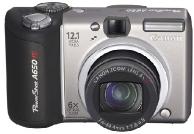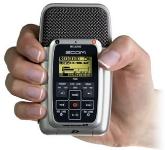Travel and Technology
When I travel I take technology with me. Here's a description of what I do. It’s strictly my personal approach and is constantly changes. If you have any comments or suggestions, let me know.
Digital camera. I take lots of pictures and my choice of camera is a compromise between portability and performance. There are very small shirt-pocket cameras, but they lack features I deem important. If the camera is too big and heavy, it may take great photos, but I’m less likely to have it with me when a photo opportunity arises.
My simplistic view of digital cameras is that they fall into two categories, point-and-shoot and digital single-lens reflex (DSLR) models. DSLR cameras have large sensors that are equal to or a bit less than a 35 mm frame (36x24 mm). They necessarily have longer focal-length and larger lenses that can gather more light with less noise in low-light situations. They take interchangeable lenses. They also support the RAW image format where the image is not compressed, providing a wider dynamic range. There are fewer blown out highlights and more detailed shadows. They are more expensive, particularly the full-frame models. A new category has recently appeared that is not an SLR and is much smaller and lighter, but has a large sensor and interchangeable lenses.
Point and shoot models are cheaper, smaller and lighter and let you view the image with an LCD or optical viewfinder. They also take movies that, until recently, has eluded the DSLR cameras and have optical zoom ranges 10X or more.
Update: There a new breed of cameras that span the features of the point-and-shoot and DSLR models. They have a large sensor, save in RAW format and can accept interchangeable lenses, like the DSLR, but are smaller since they do not use through-the-lens viewing (flip-up mirror).
 I chose the Canon A650, a medium-sized point-and-shoot camera that takes great photos yet has features I like. It's discontinued.
I chose the Canon A650, a medium-sized point-and-shoot camera that takes great photos yet has features I like. It's discontinued.
- It uses 4 AA batteries, either rechargeable NiMH or alkaline. Rechargeables have greater capacity, but I carry alkaline batteries as a backup in case I can't use my charger.
- Swivel LCD viewfinder lets me shoot overhead, from the waist or around corners. I find it very handy.
- Optical viewfinder when ambient light is high or I need quick response.
- 6X optical zoom and 12 Megapixel sensor.
- It has image stabilization (IS), but I don't know how well that works.
 Chris uses the older Canon A95, which shares many of the features of the A650 but has a 3X zoom and a 5 Megapixel sensor. Both models are no longer in production, but Canon regularly introduces new models with similar and even more advanced features
Chris uses the older Canon A95, which shares many of the features of the A650 but has a 3X zoom and a 5 Megapixel sensor. Both models are no longer in production, but Canon regularly introduces new models with similar and even more advanced features
Memory cards. These are cheap and hold lots of photos so use the highest quality and resolution that your camera supports. Stick with Secure Digital (SD or SDHC) or Compact Flash (CF) cards as these are widely available. Most non-SLR cameras have a movie mode and can take amazingly good videos. I shoot at 640x480 and 30 fps. The SDHC card seems to have taken over as the standard and new Macs have a built-in card reader for them.
Be sure to set the clock in the camera to local time so each photo will have a time and date stamp. This is very useful for remembering what you photographed. Chris and I merged our photos and having them date stamped arranged them in the proper order.
Time exposures. I prefer natural light over flash. It doesn't frighten the subject or work well at distances greater than 10-15 feet and in some cases is prohibited. Natural light indoors requires long exposures, often 1/10 sec or more and will cause blur if the camera is hand held. A tripod isn't practical so I usually rest the camera on a railing or door frame to steady it for time exposures. I also bring a monopod (a one-legged tripod) that is helpful in some situations. It collapses to about 15 inches so it's easy to carry, but it is another thing to lug. I used it to great advantage in China to photograph the Terra Cotta Warriors, where tripods were forbidden. Attaching the camera to the monopod and leaning it against the railing gave very steady shooting.
 Zoom H2 audio recorder. This is useful for taking notes and recording music and sounds. Use it to discuss the events of the day. It's amazing how quickly you forget what you did. I used the MP3 format which takes very little storage. A 0.5 GB SD card that came with the recorder held about 12 hours of audio at 64 kpbs mono. I didn't need high fidelity, but the sound was still very good. I used it in the Automatic gain control (AGC) mode since I didn't want to bother with adjusting levels. The audio files are time stamped so they can be coordinated with the photos. The H2 uses AA batteries and SD memory cards, compatible with my camera. The H2, which can produce CD-Quality recordings, is overkill for just taking notes, but since I had it I used it.
Zoom H2 audio recorder. This is useful for taking notes and recording music and sounds. Use it to discuss the events of the day. It's amazing how quickly you forget what you did. I used the MP3 format which takes very little storage. A 0.5 GB SD card that came with the recorder held about 12 hours of audio at 64 kpbs mono. I didn't need high fidelity, but the sound was still very good. I used it in the Automatic gain control (AGC) mode since I didn't want to bother with adjusting levels. The audio files are time stamped so they can be coordinated with the photos. The H2 uses AA batteries and SD memory cards, compatible with my camera. The H2, which can produce CD-Quality recordings, is overkill for just taking notes, but since I had it I used it.
iPod. I load mine with audio books, giving me lots of reading (listening) material and I don't have to lug along a lot of paper. It's great for listening on long drives or waiting in an airport. My nano is very small, holds dozens of books and I can listen to it if I can't sleep and don't want to waken my wife. It also has my addresses, if I need them, and I can carry a collection of photos and videos to share. My article, May 2007, describes how to create audio books for iTunes and the iPod.
 Electrical power. I was concerned that I might need an adapter to fit US plugs into the European socket, but was pleasantly surprised that most modern hotels in India and Bhutan would accommodate US plugs. The three round holes fit the European plugs, but the inside of the two bottom holes is straight and fits a US plug. The voltage is 220, but my battery chargers (and most electronic gadgets these days) support either 110 or 220. Sometimes I had to insert a pencil in the large hole so my plug would go in the lower holes. I haven't yet figured out the logic behind this. Some bathrooms have a low-power US socket for razors. This seemed to work OK with my chargers.
Electrical power. I was concerned that I might need an adapter to fit US plugs into the European socket, but was pleasantly surprised that most modern hotels in India and Bhutan would accommodate US plugs. The three round holes fit the European plugs, but the inside of the two bottom holes is straight and fits a US plug. The voltage is 220, but my battery chargers (and most electronic gadgets these days) support either 110 or 220. Sometimes I had to insert a pencil in the large hole so my plug would go in the lower holes. I haven't yet figured out the logic behind this. Some bathrooms have a low-power US socket for razors. This seemed to work OK with my chargers.
Internet. Major hotels have a business center with internet access, but it's often expensive. A few hotels had Internet in the room or wireless, but I think you had to pay. There are Internet cafes that don't charge much. I only used the Internet once in India and it cost me 20¢ for 15 minutes to send a few emails. A laptop seems like a heavy item to travel with and you would still need to find an Internet connection. In the future I might go for something like an iPod Touch, an iPhone or the smaller netbooks, assuming Apple starts making one.
Cell phone. I didn't bring a cell phone since a US phone is expensive to use unless you unlock it and buy a local SIM card, but then who would I call? But if you're an independent traveler it might make a lot of sense.